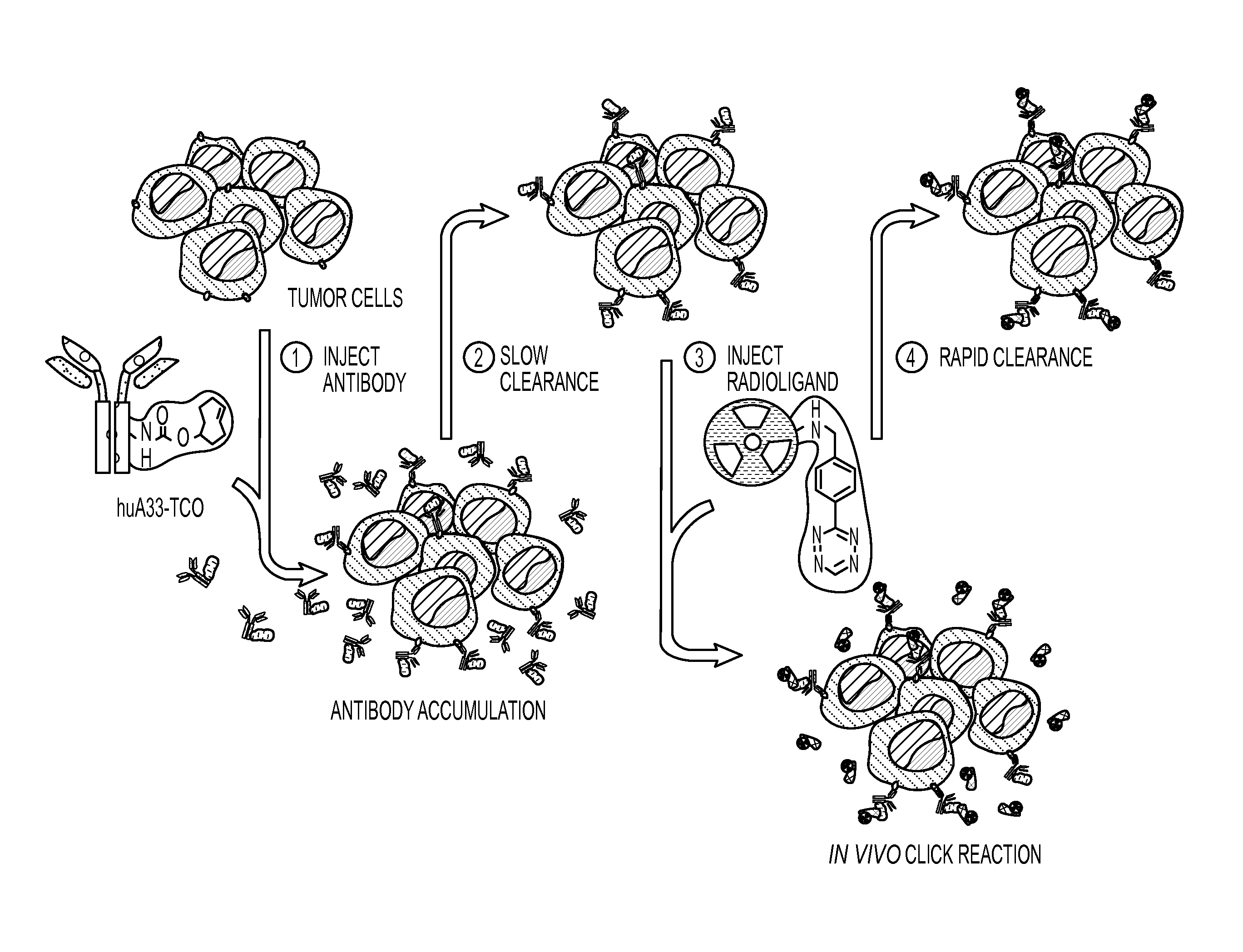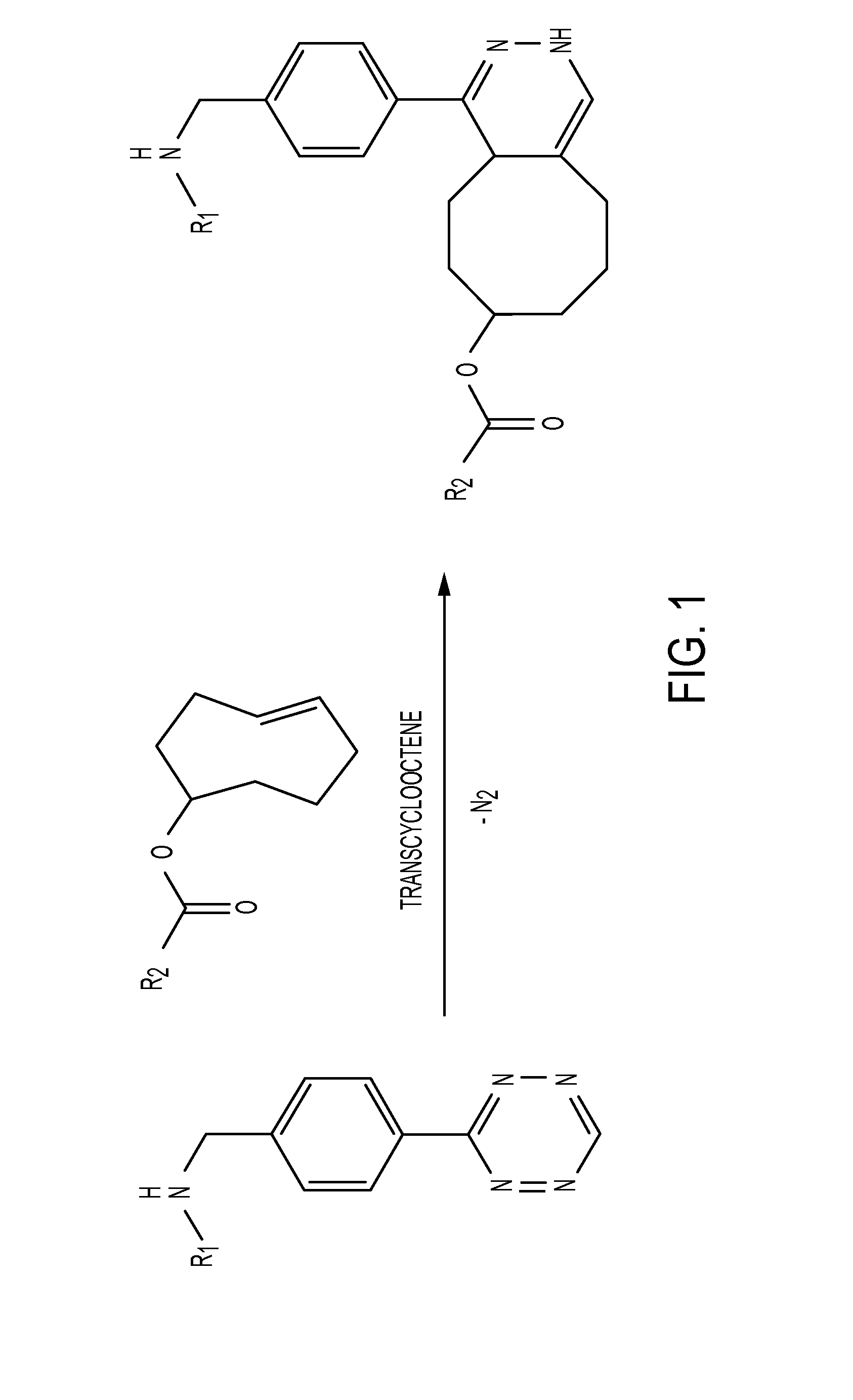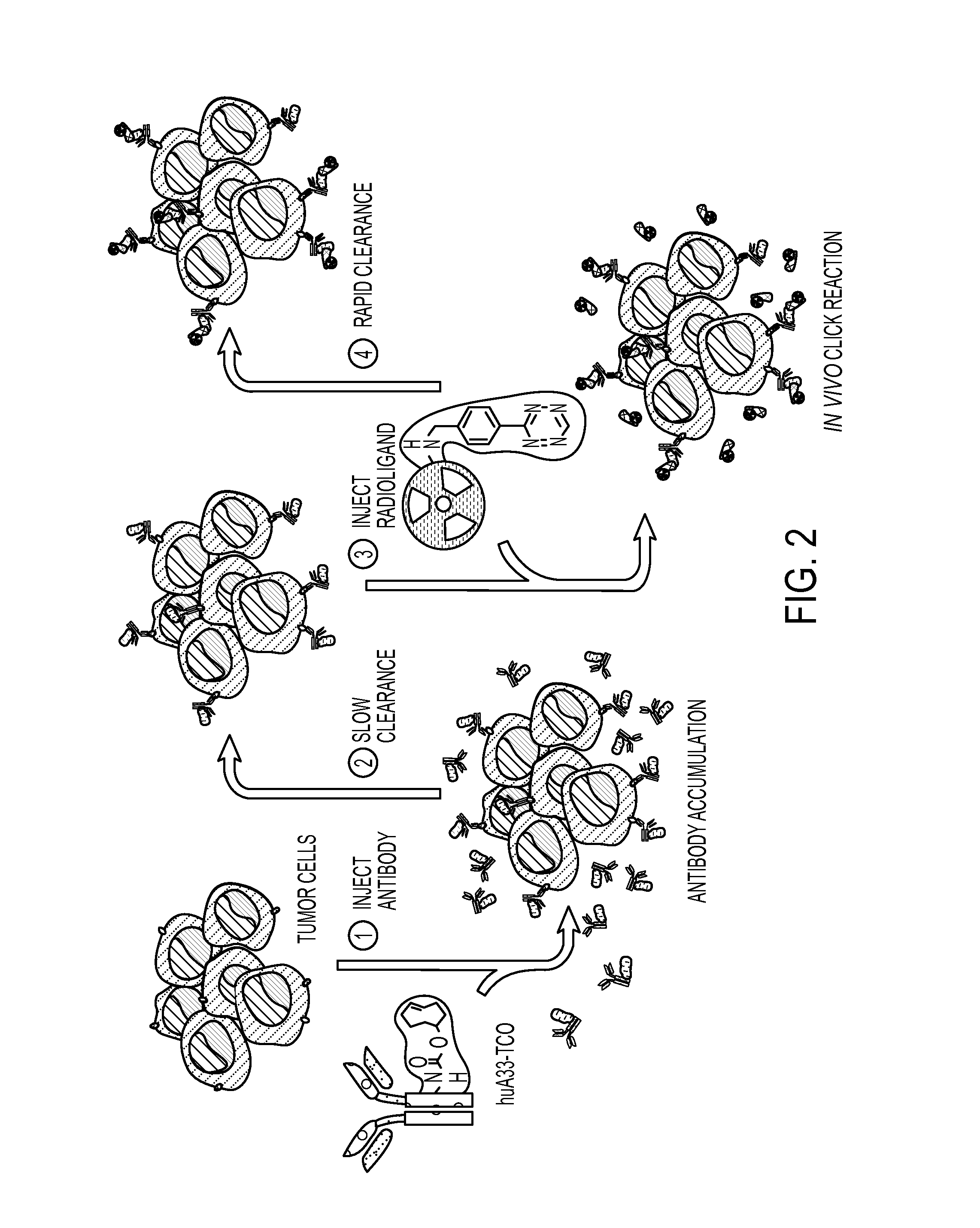Radioligands for pretargeted pet imaging and methods of their therapeutic use
a radioligand and cancer technology, applied in the field of pretargeted positron emission tomography (pet) imaging of cancer, can solve the problems that the imaging of small molecules, such as tetrazine, has not been achieved before, and achieves the effect of rapid excretion and reduced radiation dos
- Summary
- Abstract
- Description
- Claims
- Application Information
AI Technical Summary
Benefits of technology
Problems solved by technology
Method used
Image
Examples
experimental examples
of 64Cu Tetrazine Radioligands
Methods and Materials
[0145]Unless otherwise noted, all chemicals were acquired from Sigma-Aldrich (St. Louis, Mo.) and were used as received without further purification. All water employed was ultra-pure (greater than 18.2 M−1 cm−1 at 25° C.), all DMSO was of molecular biology grade (greater than 99.9%), and all other solvents were of the highest grade commercially available. Acetonitrile (CH3CN) and dimethylformamide (DMF) were purchased from Acros Organics (Waltham, Mass.) as extra dry over molecular sieves. Amine-reactive trans-cyclooctene [(E)-cyclooct-4-enyl 2,5-dioxo-1-pyrrolidinyl carbonate; TCO-NHS)] and amine-reactive tetrazine (2,6-dioxo-1-pyrrolidinyl 5-[4-(1,2,4,5-tetrazin-3-yl)benzylamino]-5-oxopentanoate; Tz-NHS) were purchased from Sigma-Aldrich (St. Louis, Mo.). p-NCS-Bn-NOTA, p-NH2-Bn-NOTA, and DiAmSar chelators were purchased from Macrocyclics, Inc. (Dallas, Tex.). Tz-NOTA and 64Cu-Tz-NOTA were synthesized as previously reported. 44 H...
PUM
| Property | Measurement | Unit |
|---|---|---|
| time | aaaaa | aaaaa |
| time | aaaaa | aaaaa |
| time | aaaaa | aaaaa |
Abstract
Description
Claims
Application Information
 Login to View More
Login to View More - R&D
- Intellectual Property
- Life Sciences
- Materials
- Tech Scout
- Unparalleled Data Quality
- Higher Quality Content
- 60% Fewer Hallucinations
Browse by: Latest US Patents, China's latest patents, Technical Efficacy Thesaurus, Application Domain, Technology Topic, Popular Technical Reports.
© 2025 PatSnap. All rights reserved.Legal|Privacy policy|Modern Slavery Act Transparency Statement|Sitemap|About US| Contact US: help@patsnap.com



